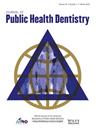To determine the extent to which individual and contextual variables explain income inequities in tooth loss in Brazilian adults.
A nationally representative sample of 65,784 Brazilian adults aged 18–59 who participated in the Brazilian National Health Survey 2019 was analyzed. Self-reported tooth loss was the outcome. Per capita income was the main exposure, and minimum wage was the cutoff point. Individual covariates included sex, race, and schooling, dental visits, smoking status, use of dental floss, and self-reported chronic conditions. Contextual covariates included access to treated water and geographic region of residence. Blinder-Oaxaca decomposition analysis was used to estimate the share of each factor in income-related tooth loss inequities by age groups.
Age-standardized tooth loss showed large income inequities. The average difference in tooth loss related to income inequities in the 18-34-year-old group was 0.50 (95% CI 0.39; 0.60), increasing to 4.51 (95% CI 4.09; 4.93) in the 45–59 years. Individual and contextual covariates explained almost 90% of income inequities in the 45–59 year group. Use of dental floss, schooling, and geographic region of residence (a proxy for human development level) had a higher proportion of contribution to the inequities examined.
Individual and contextual covariates (proxy for human development level and water fluoridation coverage) explained a large share of income-related tooth loss inequities. Tailored strategies to act at both levels can help reduce tooth loss inequities among Brazilian adults.


